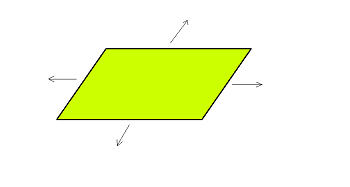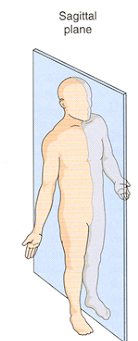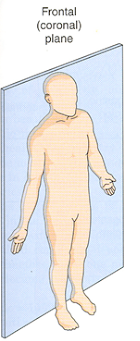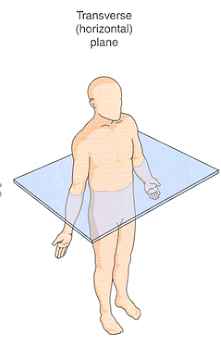Planes of Movement
by Erik Castiglione
In high school, I loved algebra and calculus, but I hated geometry. The Cartesian plane made sense to me, but trying to visualize 3 dimensions in geometry, let alone draw them (I SUCK at art), was difficult for me. But we live and move in a 3-dimensional world, so it’s important to have a model that we can understand to describe movement. Enter: movement planes.
As you may recall, a plane is a 2-dimensional object that extends infinitely. When we look at the human body, there are 3 planes that we can use to divide the human body and describe human movement. They are: the sagittal plane, the frontal plane, and the transverse plane. These planes can be thought of as tracks along which the human body can move.
The sagittal plane splits us into left and right halves. Movement in this plane is front to back, or back to front. CrossFit is HEAVY on the sagittal plane. Squats, deadlifts, lunges, running, rowing, KB swings, toes to bar, ANYTHING that involves moving forward, backward, flexing, or extending, is a sagittal plane movement.
The frontal plane splits us into front and back halves. If we think about moving in this plane, we’re not able to move forward or backward, only left to right. SOME movements in CrossFit allow us to move in this plane: Cossack squats, lateral lunges, and side shuffles are examples of frontal plane movements.
The transverse plane splits us into top and bottom halves. This is the most neglected plane of movement, particularly in CrossFit. We can only move in the transverse plane by rotating: med ball chops, Russian twists, etc.
So, now that we’ve established the planes of movement, why do we care? Well, as I said previously, we live in a 3-dimensional world. In sport, many movements involve MULTIPLE planes of movement simultaneously. Picture a baseball swing: the batter steps laterally toward the pitcher (frontal plane movement) and then rotates his/her hips, shoulders, and the bat to make contact with the ball (transverse plane). Similarly, throwing involves a lateral step and trunk rotation.
Our real-life actions (those outside of the gym and sport) also involve MULTIPLE planes of movement at the same time. We pick things up and carry them, lift things up onto shelves and get them down again, bend, twist, etc. If we spend all our time training in only 1 plane of motion and neglect the others, we’re more likely to get hurt when we move in those other planes. Think about it: when was the last time you got hurt? Was it in the gym, or doing something mundane? Most of us are fine in the gym because we have our guards up and we’re focused on what we’re doing. That’s not true elsewhere. Furthermore, if we’ve neglected a plane of movement, we lose familiarity with moving in that plane. If you’re not used to rotating, you’re more likely to get hurt if you end up rotating under load.
So, we can do our best to prevent injuries in our every day lives by training each plane of movement in an artificial setting, like the gym. To this end, you’ll be seeing an increase in the amount of lateral and rotational work that we do in our November program. Enjoy!




